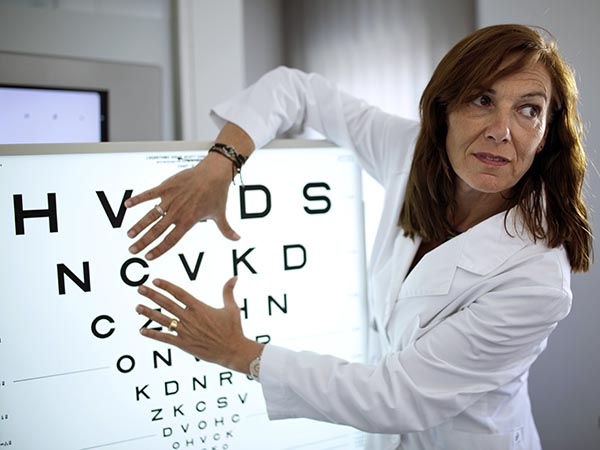Recent advances in ophthalmology and the frequency of preventive eye exams have made it possible for many eye conditions not to result in total vision loss.
However, some diseases cause vision loss that cannot be restored through surgery, pharmacological treatments, or even conventional glasses. This vision, which may be useful but insufficient, is called low vision.
The most common symptoms are loss of detailed vision of objects, reduction of the visual field (side vision, steps, etc.), or both symptoms simultaneously.
The most frequent diseases causing low vision are age-related macular degeneration (AMD), retinitis pigmentosa, cataracts, diabetic retinopathy (DR), and glaucoma.
What symptoms does low vision present?
- Central vision loss. The patient notices a loss of vision that prevents reading, watching television, or recognizing people’s faces, but does not impair mobility. This occurs in people suffering from age-related macular degeneration (AMD).
- Visual field loss. The patient has a limitation of peripheral vision (side, upper, lower, or tubular). They have mobility problems because they cannot see obstacles or stairs, for example. This is a classic symptom of glaucoma or retinitis pigmentosa.
- Glare, loss of contrast, and color confusion.
- Image distortion.
- Blurred vision.
The low vision specialist team conducts an assessment to evaluate each patient’s vision. Based on this study, visual acuity, contrast sensitivity, visual field, and color vision are determined.


